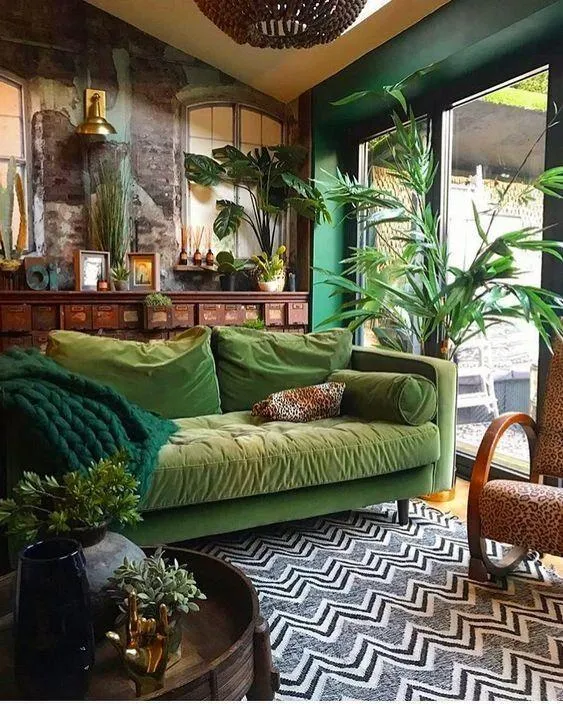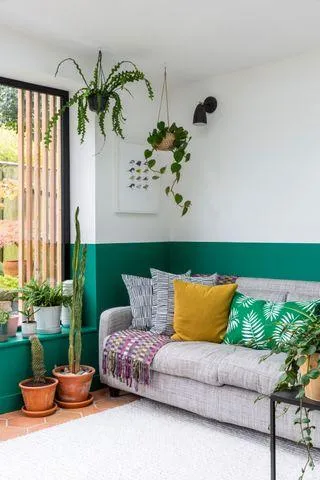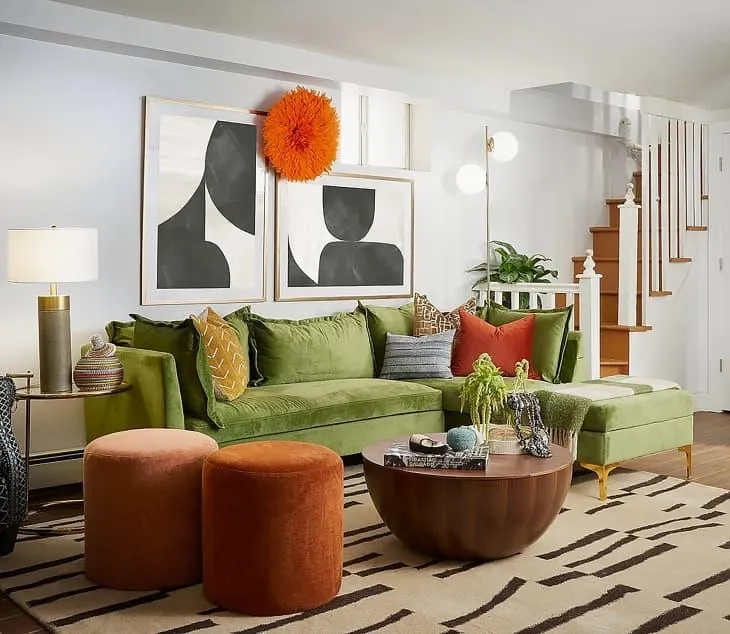The Many Benefits of Decorating Your Home With Plants
If you’re looking to spruce up your home’s interior while also improving your indoor air quality and overall well-being, decorating with plants is basically the way to go. As anyone who’s spent time around greenery can tell you, having plants inside makes a huge difference in how vibrant and refreshing a space feels.
Plants Purify the Air
From my experience living in both plant-filled and sterile homes, I can say that plants really do clean the air. They absorb toxins like volatile organic compounds that are emitted from things like paint, cleaning supplies, and pressed wood products. These compounds can cause health issues if breathed in over long periods. Plants help filter the air through their leaves, trapping and chemically breaking down pollutants. Pretty amazing when you think about it!
A NASA study from the 1980s apparently found that certain common houseplants can remove up to 87% of toxins from indoor air in 24 hours. Kind of makes you wonder how we ever dealt with stuffy air before plants, right? So as a bonus to their decorative properties, plants are doing silent yet important purification work too.
Plants Lift Your Mood
Being around greenery has also been shown to reduce stress and boost happiness levels. When I’m feeling overwhelmed, just gazing at my collection of green friends helps me unwind. One study found that hospital patients recovered more quickly when their rooms had plant views versus plain walls. The visual of plants seems to have actual psychological benefits. At the same time, caring for plants may foster a sense of satisfaction and responsibility. So indecorating your home with plant life, you’re beautifying your space and your mental well-being too.
Easy Ways to Incorporate Plants
Okay, so by now I’m assuming you’re convinced of all the amazing benefits plants bring. But where and how do you even start decorating with them? Here are some straightforward suggestions to brighten up your home with greenery:

- Place tabletop plants in your kitchen or living area for an instant pop of color. Try succulents, pothos, spider plants or peace lilies – all of which are pretty much unkillable.
- Add tall standing plants to corners or on each side of a couch or bed. Bamboo, dracaenas or fiddle-leaf fig trees dress up a space while softening sharp angles.
- Hang trailing plants in macrame hangers from shelves, windows or above kitchen counters. English ivy, pothos and tropical vines look super stylish cascading down.
- Use floor plants as room dividers or centerpieces. Palms, monsteras and rubber trees make handsome statement pieces that sort of home in on an area.
- Display potted herb gardens on patios, decks or sunny windowsills. Basil, rosemary and thyme not only smell amazing, but you can snip them for cooking too.
Those are a few low-effort ways to start doing what plants do best – beautifying your home in a totally eco-friendly yet mood-boosting kind of way. But pick varieties that match your aesthetic and light conditions.
Tending to Your Green Friends
While plants liven up interiors effortlessly, they obvi sort of require some tending now and then. From my experience, overwatering has been the main cause of plant deaths in my careless college days. So it’s important to understand a plant’s specific watering needs based on factors like soil type and light exposure.
As a general rule, plants like to dry out partly between waterings. You can check soil moisture by sticking your finger an inch down. Is it dry? Time to water! Another pro tip is using a pebble tray – fill the bottom of a plant’s container with pebbles and water, so humidity rises and keeps soil from drying fast.
Plants also need occasional fertilizer to stay healthy. I recommend choosing an all-purpose liquid variety and following package instructions. And don’t forget to prune or propagate! Trimming leggy growth or propagating cuttings ensures you’ll always have new plant buddies starting. It’s basically a win-win since plants love being babied but also spruce up spaces with low effort.
Dealing with Pests
A downside is that thriving plants can sometimes attract unwelcome visitors. Mealybugs, spider mites and scale insects appearances seem to happen out of nowhere and can spread fast. I had an awful mealybug infestation once that took forever to get rid of. When pests strike, isolate the plant quickly and spray down both top and bottom leaves with a diluted neem oil or insecticidal soap solution. Repeat every few days until the buggers clear out for good.

Preventing pests proactively is simpler than handling an infestation, in my experience. Check new plant purchases carefully before introducing them. Isolate newcomers for a few weeks, quarantining any with pests already. Good sanitation also helps – regularly wipe leaves and scrub infested-looking areas.
Making Plants Part of Your Decor
Once you’ve got the hang of plant basics, the real creative fun begins – stylizing them into your home’s overall aesthetic. If you like rattan or wood tones, try macrame hangers or woven baskets. Terracotta and ceramic pots lend themselves well to traditional, rustic or Mediterranean vibes. And metal, concrete or modern plastic vessels suit contemporary, industrial spaces.
You can also get crafty decorating pots yourself! DIY ideas like wrapping terra cotta in jute or burlap, stenciling patterns, or adhering botanicals and paper lend unique personal touches. Perhaps hang string lights amongst leafy vines for a lush glow after dark too. Or make an architectural statement grouping plants by size on elevated risers or multi-tiered stands.
The possibilities are endlessly stylish once you start viewing plants not just as decor but artistic design elements in their own right. So get creative, mix up textures and scales, and your green-filled home will radiate positive energy and natural charm for years to come. In the end, thoughtfully incorporating greenery creates living interior “art” better than any furnishings ever could alone.
Hopefully these ideas gave you some inspiration for brightening your place with plant life indoors. From tending to styling, just do what feels right and your plant parenthood skills will grow over time. Let me know if any other plant questions come up! Overall just remember – having green friends around makes living and feeling good a whole lot easier, yeah?

Choosing House Plants
| Plant | Light Needs | Watering Needs | Care Difficulty |
|---|---|---|---|
| Peace Lily | Medium | Water when soil is dry | Easy |
| Pothos | Low | Water when top soil is dry | Very Easy |
| Spider Plant | Low-Medium | Water when soil is dry | Easy |
| Snake Plant | Low | Water every 1-2 weeks | Very Easy |
| Chinese Evergreen | Medium | Water when top 1 inch is dry | Medium |
| English Ivy | Low-Medium | Water when top soil is dry | Easy |
FAQ
-
What types of houseplants are best for decoration?
There are quite a lot of plant varieties that basically work well for indoors. Some common options contain things like peace lilies, spider plants, pothos, philodendrons and Chinese evergreens. They don’t require a whole lot of sunlight and are pretty forgiving.
-
How can I arrange plants decoratively in my home?
You can place plants in various spots around your living space to make it look nicer. Perhaps put a tall plant in a corner, or hang some vines from shelves. Maybe kind of cluster a few small plants on a table. You can even situate plants on the floor. It’s all about finding placements that appeal to your eye. At the same time, consider light and watering needs.
-
Should I put plants in every room?
You don’t necessarily have to include plants in each and every room. However, plants can provide benefits wherever they are situated. Nevertheless, rooms with the most light like kitchens and living areas are generally best. Additionally, putting plants in less used spaces like hallways or upstairs areas can work well too despite getting less direct attention.
-
Is it hard to care for indoor plants?
Taking care of houseplants is often more straightforward than folks may think. Despite occasional challenges, many plant varieties have pretty understandable needs. Most basically require things like proper light, adequate water, and not-too-harsh conditions. On the other hand, if you pick species known for easy care, it shouldn’t be too difficult to keep them looking gorgeous. Although if you forget to water for too long, it’s possible some plants may not forgive you.

-
What can go wrong with indoor plants?
While houseplants can hugely enhance indoor spaces, there are definitely a few potential problems that could occur too. For instance, overwatering is basically a common issue – it can easily drown roots. Likewise, underwatering stresses plants and causes wilting. Pests like spider mites, scales or mealybugs sometimes invade. Additionally, selecting plants unsuitable for the light level may cause etiolation. Maybe don’t leave any plants directly above furniture either – falling soil is no fun to clean up!
-
How do I know if a plant needs more or less care?
To figure out specific care requirements, it helps to research plant varieties online or check guidebooks. But you can also sort of rely on signs your plants clearly display. For example, drooping leaves may mean it’s thirsty. Yellowing foliage could indicate too much or too little water. Browning tips usually suggest dry air. And leggy stems often point to insufficient light. By paying attention to how plants respond, you can get an idea where to tweak care.
-
Do indoor plants improve air quality?
According to several studies, indoor plants have been shown to remove toxins from interior air. For instance, NASA (the space agency) did trials finding certain species lessened concentrations of pollutants like formaldehyde and benzene. Perhaps plants capture these airborne chemicals through their leaves or absorb them into soil. So having some green growing buddies around may make breathes easier. Amazingly, just one plant per 100 square feet has been said to help!
